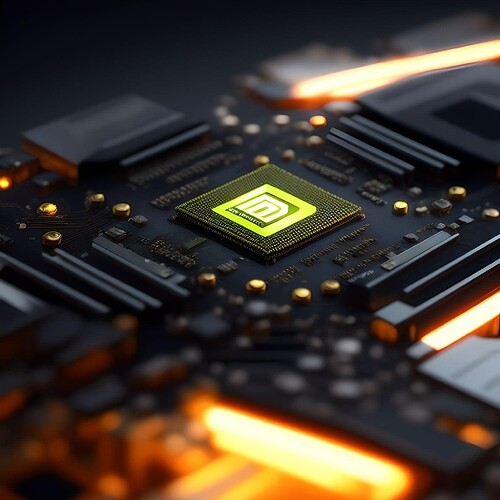In the rapidly evolving landscape of AI and generative AI, companies involved in the entire cycle are capturing significant attention, resulting in unprecedented surges in their share prices. Among these companies, Nvidia has always stood out to me. Following its recent financial results, Nvidia’s stock skyrocketed overnight, reaching a market capitalization of $216 billion.
Analysts on Wall Street had initially projected the company’s quarterly sales to be around $7 billion. However, Nvidia surpassed expectations by generating $11 billion in sales. The demand for artificial intelligence is driving this growth, as every company strives to adopt AI technologies quickly and not miss out on opportunities.
Nvidia’s competitive advantage lies in powering the AI applications developed by industry giants such as Google, Meta, and OpenAI. The AI revolution heavily relies on Nvidia’s GPUs (Graphic Processing Units). In a recent CNBC interview, Nvidia’s CEO, Jen-Hsun Huang, emphasized that the future lies in millions of GPUs, not millions of CPUs. He suggested that the data center segment alone could become a $1 trillion market.
Unlike traditional operating systems, AI applications often require multiple GPUs rather than CPUs. Advanced systems sometimes require eight GPUs simultaneously to process data and deliver outputs. This is why Nvidia’s data center business experienced 14% growth in the first quarter, while AMD’s data center unit remained flat, and Intel’s AI and data center business unit declined by 39%.
Nevertheless, Nvidia’s path to success in the future is not guaranteed. Although Nvidia’s market capitalization dwarfs its closest competitor, the market is dynamic, and competitors such as AMD and Intel are actively bolstering their arsenals.
Nvidia’s high-end GPUs remain the preferred choice for companies developing applications like ChatGPT, which require expensive training using terabytes of data and subsequent computationally intensive “inference” processes that generate text, images, or predictions.
In addition to Nvidia, other players in the semiconductor industry are also experiencing significant gains. TSMC and Dutch equipment maker ASML reported notable growth, with increases of 3.5% and 5% respectively.
One fascinating thing that stood out me was Nvidia’s automotive division, where the demand for chips and software to develop self-driving cars has grown by 114% year-over-year. Although sales in this division currently stand at under $300 million for the quarter, its the space to look out for.
The semiconductor industry as a whole holds tremendous prospects for the future. The recent announcement of Vedanta-Foxconn Semiconductor Manufacturing Unit’s plans to invest up to Rs 66,000 crore in a semiconductor chip manufacturing plant in Gujarat makes the whole industry in our country interesting, but we have a long way to go see the semiconductor business in India.
Few interesting links on the rise of NVIDIA:
How Nvidia Grew From Gaming To A.I. Giant, Now Powering ChatGPT
Nvidia’s NEW ‘AI Perfusion’ Takes the Industry By STORM!
One very interesting article I read recently on the state of TSMC Manufacturing unit:
I Saw the Face of God in a Semiconductor Factory
Bonus points for the title itself ![]()
Undoubtedly, the future of the semiconductor industry is worth looking forward to. I would love to hear your thoughts on the industry’s challenges and prospects.
Disclaimer: The opinions expressed in this post are solely those of mine and do not represent the views or opinions of the company. The information provided in this post is intended for educational purposes only and should not be construed as financial or investment advice. Members are advised to conduct their own research and consult with a professional financial advisor before making any investment decisions
